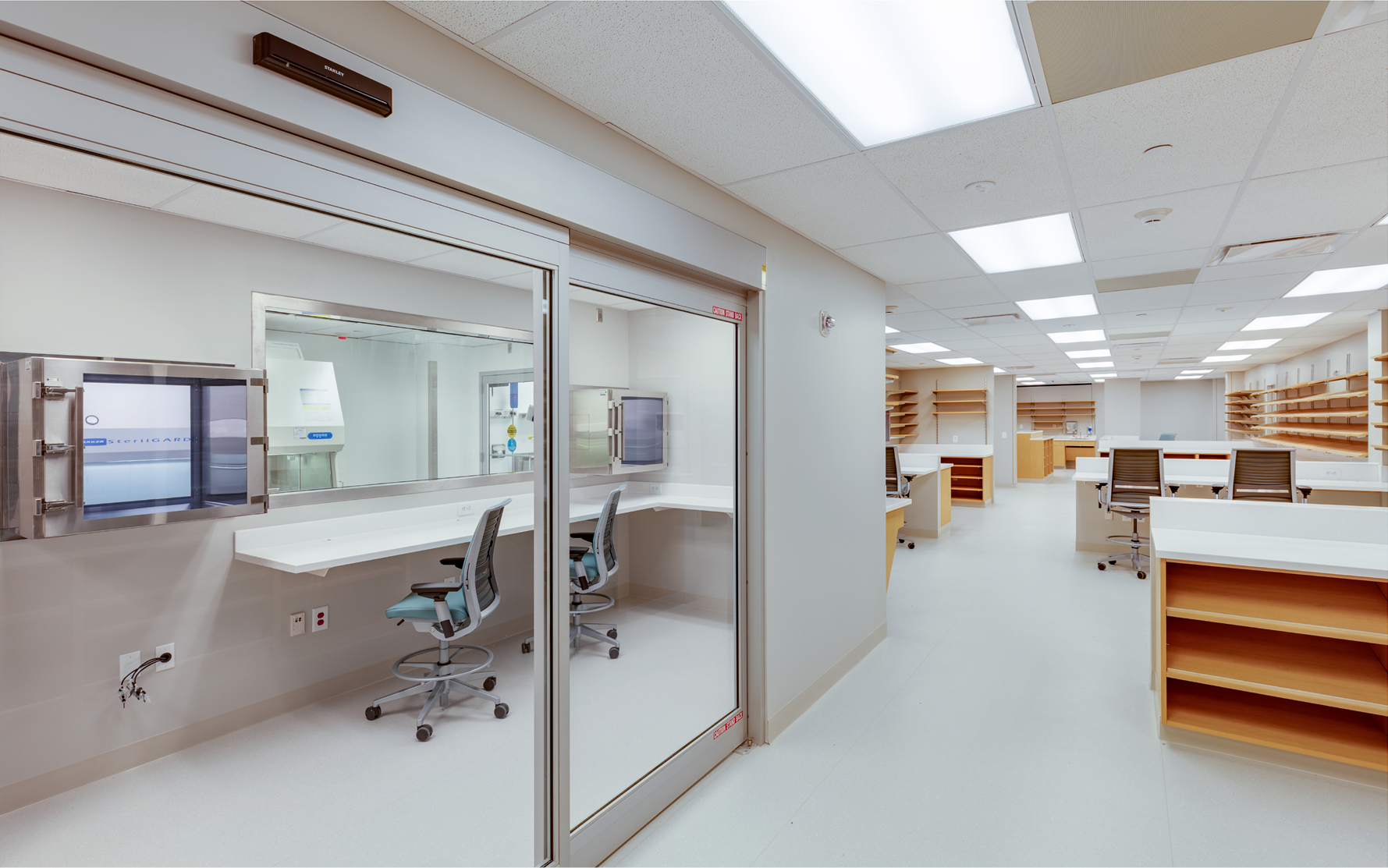Designing for USP 800: Creating A Safe Healthcare Environment
July 19, 2018 // Recognition, Healthcare, Laboratory

Exposure to hazardous drugs – such as those used in cancer treatment, antivirals, hormones, and some bioengineered drugs – can put healthcare workers at serious risk of adverse health effects. These can include impact or damage to DNA, cancer, infertility, birth defects, and organ damage, to name a few.
In February 2016, The United States Pharmacopeia (USP) released USP Chapter 800, “Hazardous Drugs – Handling in Healthcare Settings,” to address these risks. Chapter 800 outlines a strict set of standards on the handling of these drugs in hospitals and the design of clinical pharmacies to minimize risk. This poses several design implications for the space planning of pharmacies to achieve compliance.
Meeting the deadline
Facility modifications will need to be implemented before the USP 800 effective date in December 2019, placing pressure on hospitals to act now. Our design team is experienced in USP compliance and healthcare design and can help these facilities reach USP 800 compliance by the defined date.
Perspectus Architecture works with top healthcare institutions improving and reconfiguring their pharmacies to ensure that the environment is designed to meet requirements of USP 800.
Our first step is a site evaluation of the physical space by creating a compliance checklist or gap analysis. Then we speak with the users about their workflow and processes.
“We talk to the pharmacists and pharmacy techs that live in the space to identify where improvements can be made with their workflow and processes,” says Ray Minotas, Project Director at Perspectus Architecture. “That will then impact the overall design and layout while also making sure that all USP 800 guidelines are met.”
Key facility improvements
The new engineering and environment control/quality requirements apply to unpacking environments, preparation and compounding cleanrooms, and storage spaces.
“Previously, non-hazardous and hazardous drugs could be received and unpacked in the space. Sterile and non-sterile hazardous drugs could also be stored together in positive pressure – this is no longer allowable,” says Sal Rini, Principal at Perspectus Architecture.
Pharmacies are now required to have separate cleanrooms – one for sterile non-hazardous, and another for sterile hazardous, with an anteroom between them for access. The receiving and unpacking areas for hazardous drugs must now be under negative pressure with at least 12 air exchanges per hour to assist in the ventilation of potentially harmful gasses or residue.
One of the most challenging aspects of these upgrades can be finding the space within the existing facility to accommodate hazardous drug unpacking and storage rooms adjacent to the compounding room.
Minimizing Public Health Risks
It is important to reiterate that the design modifications expressed in USP 800 are the response to the growing concern of dangerous health risks that can result from the exposure to the over 200 hazardous drugs during receiving and handling in healthcare settings. The design of a new pharmacy will vary widely on a case-by-case basis, depending on the existing conditions of the pharmacy. Perspectus Architecture works closely with hospitals to ensure the least impact possible to their facilities and to maintain full compounding operations.